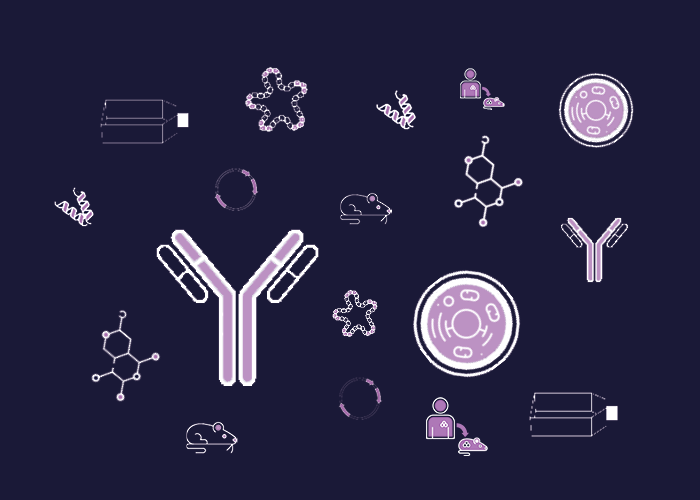Cat. #152107
Anti-Ubiquitinated Histone H2B (Lys123) [1B3F12/A9]
Cat. #: 152107
Sub-type: Primary antibody
Unit size: 100 ug
Availability: 3-4 weeks
Target: Yeast monoubiquityl-histone H2B
Class: Monoclonal
Application: WB ; ChIP ; ELISA ; WB
Reactivity: Human ; Schizosaccharomyces pombe ; Saccharomyces cerevisiae
Host: Mouse
£300.00
This fee is applicable only for non-profit organisations. If you are a for-profit organisation or a researcher working on commercially-sponsored academic research, you will need to contact our licensing team for a commercial use license.
Contributor
Inventor: Alfred Nijkerk
Institute: UbiQ Bio
Tool Details
*FOR RESEARCH USE ONLY (for other uses, please contact the licensing team)
- Name: Anti-Ubiquitinated Histone H2B (Lys123) [1B3F12/A9]
- Research fields: Genetics
- Clone: 1B3F12/A9
- Tool sub type: Primary antibody
- Class: Monoclonal
- Conjugation: Unconjugated
- Molecular weight: 23 kDa
- Reactivity: Human ; Schizosaccharomyces pombe ; Saccharomyces cerevisiae
- Host: Mouse
- Application: WB ; ChIP ; ELISA ; WB
- Description: C-terminus monoubiquitination of histone H2B acts as a signal for downstream processes such as gene regulation, genome packaging, histone modification crosstalk, and DNA repair. How the ubiquitination levels are controlled and how the Ub signal is translated to downstream effects is poorly understood. An antibody that detects K123 monoubiquitinated yeast H2B, homologue to human H2B K120, will enable research to discover the fundamental principles of the regulation and function of monoubiquitination of H2B. The antibody is developed using an ubiquitin-polypeptide antigen based on the amino-acids 115-130 of the yeast H2B protein, linked by a proteolytically stable bond.
- Immunogen: Ub-polypeptide antigen based on amino acids 115 - 130 of yeast H2B
- Isotype: IgG1
- Recommended controls: Yeast histone preparation
Target Details
- Target: Yeast monoubiquityl-histone H2B
- Molecular weight: 23 kDa
- Tissue cell line specificity: Yeast histone preparation
- Target background: C-terminus monoubiquitination of histone H2B acts as a signal for downstream processes such as gene regulation, genome packaging, histone modification crosstalk, and DNA repair. How the ubiquitination levels are controlled and how the Ub signal is translated to downstream effects is poorly understood. An antibody that detects K123 monoubiquitinated yeast H2B, homologue to human H2B K120, will enable research to discover the fundamental principles of the regulation and function of monoubiquitination of H2B. The antibody is developed using an ubiquitin-polypeptide antigen based on the amino-acids 115-130 of the yeast H2B protein, linked by a proteolytically stable bond.
Applications
- Application: WB ; ChIP ; ELISA ; WB
Handling
- Format: Liquid
- Concentration: 1 mg/ml
- Unit size: 100 ug
- Storage buffer: PBS with 0.02% azide
- Storage conditions: -15° C to -25° C
- Shipping conditions: Shipping at 4° C
References
- van Welsem et al. 2018. Nucleic Acids Res. 46(21):11251-11261. PMID: 30203048.
- Dot1 promotes H2B ubiquitination by a methyltransferase-independent mechanism.
- Vlaming et al. 2016. Elife. 5:. PMID: 27922451.
- Direct screening for chromatin status on DNA barcodes in yeast delineates the regulome of H3K79 methylation by Dot1.

![Anti-Ubiquitinated Histone H2B (Lys123) [1B3F12/A9]](https://cancertools.org/wp-content/uploads/968ab48a-9088-41a3-91a2-b37bbef10764.jpg)


